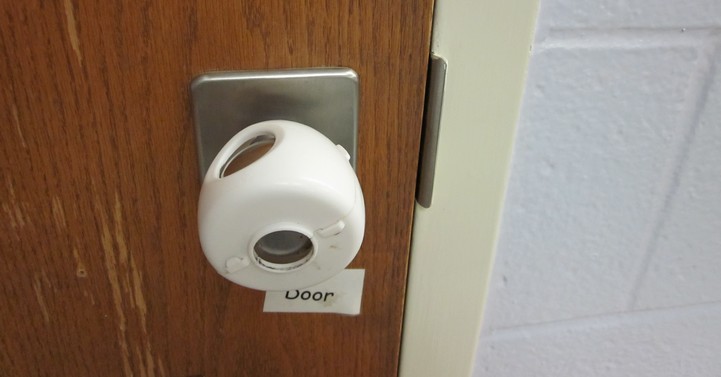
Encouraging safe exploration is an important job for child care providers. Children are natural explorers and risk takers. They move quickly, put things in their mouths, drop or throw things, and love to climb and hide. Keeping children safe is crucial. But setting up an environment where you spend all day saying “Don’t touch this!” or “Stay away from that!” is not the answer. Instead of spending your time redirecting children, think carefully about how you set up the environment. Giving children the chance to explore freely in a well-organized and child-safe space is a much more effective way to manage behavior and encourage learning.
If children in your child care program are misbehaving, check to see whether the environment is contributing to the problem. Take a close look at your space, indoors and outdoors. Setting up a safe place to play and providing appropriate toys can keep children interested in learning, reduce behavior problems, and save you from saying “No” too often.
Here are some tips to create a space that engages children and encourages safe exploration.
- Try a child’s-eye view. Get down to the children’s height and walk or crawl around the space. Pay attention to hazards you might not notice when standing up. By looking at the space from the child’s viewpoint, you may see accidents waiting to happen.
- Make sure your space is child-safe. Whether you are in a child care center or a family child care home, make your space safe for children. Store dangerous chemicals and medicines out of children’s reach. Cover electrical outlets, and store dangerous or breakable objects up high. Fix, lock up, or discard anything that might be a danger to children. Be sure all outdoor play areas are fenced in to keep children safe.
- Arrange your space wisely. Often the way you organize your child care space can make a difference in how children behave. If a space is too open, you may find children running wildly. Pay attention to where behavior problems occur. Set up shelves and other furniture to divide the room into separate learning and play areas. This will cut down on running and help children find activities more easily.
- Identify and cut off “runways.” Long, narrow spaces — including open hallways and long aisles in the classroom — encourage running. Break up those long, narrow spaces by rearranging furniture, or add barriers to discourage runners. Try staggering tables so you don’t have long, open aisles. Place seating areas or small tables at intervals down the hallway. These visual cues may help reduce running.
- Organize toys and supplies to make things easy for children. You will have fewer problems if children can find toys and supplies. Place toys on low shelves. Label the shelves with pictures and words so children will know where to put them back.
- Make sure there are enough toys. Problems often arise when children do not have enough toys or materials to play with. Think about what you need for children of different ages and interests. Plenty of paper to draw on; materials to sort, collect, trade, and share; dress-up clothes and props; puzzles and games; and well-maintained equipment to climb or ride on will keep children busy and interested.
- Make sure the toys match the children’s ages and abilities. Infants need toys that they can shake, drop, mouth, roll, and otherwise explore with their bodies. Toddlers need toys they can push, pull, grab, fill, dump, or yank without causing major damage. Toddlers have not yet learned how to share well, so purchasing several favorite toys can help prevent a lot of behavior problems. Preschoolers need more complex materials that keep them interested for longer periods and challenge their new learning skills.
- Teach children how to handle toys and materials. Explain and model how to carefully handle books, toys, and other materials. Even very young children can learn to treasure books, to turn the pages gently, to carry them carefully, and to read them in special places. Repeat this message a number of times, and give children plenty of opportunities to practice.
For More Information
To learn more about positive and safe child care environments that support children’s learning, check out the following eXtension Alliance for Better Child Care articles:
- Health and Safety in Child Care
- Toy Safety in Child Care
- Adapting the Child Care Environment for Children with Special Needs
- Finding Inexpensive Toys for a Child Care Program
- Age-Appropriate Toy Ideas for Child Care
Photo by Diane Bales / CC BY http://creativecommons.org/licenses/by/2.0/
